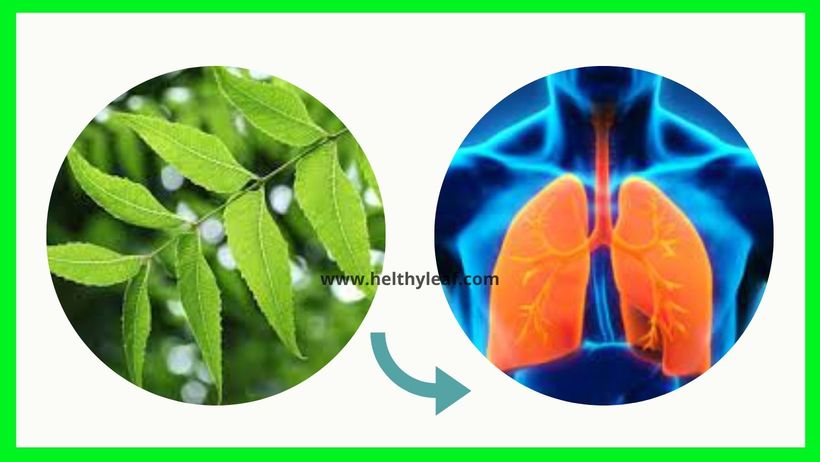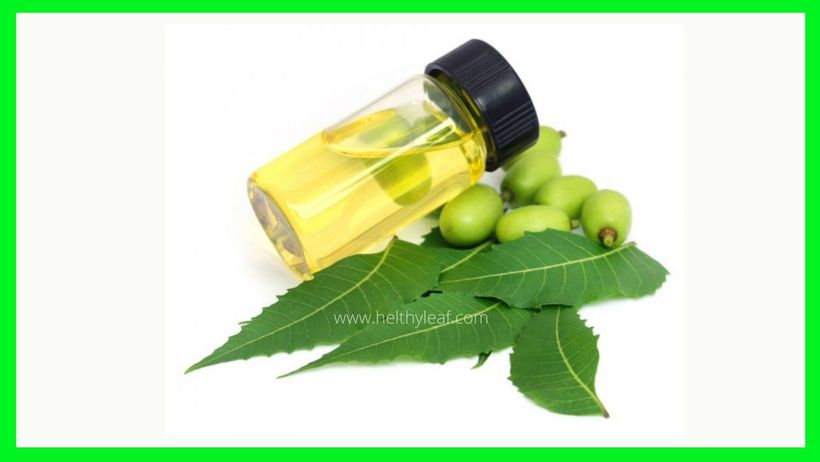Neem is as good for the environment as it’s considered beneficial for the human body. People have been using Neem as Ayurvedic medicine and home remedies for centuries. The entire plant is being used for different kinds of problems related to the human body. Therefore, this article will lead you to both the beneficial and harmful sides of Neem. In addition, this article will contain the recipe/process of making Neem oil and will try to let you know about the medicinal properties of this particular herb.
Benefits of Neem – Uses and Side Effects

What is Neem?
Neem is a plant, almost all parts of which are considered beneficial for the human body. It belongs to the “Mahogany plant” family and its botanical name is “Azadirachta Indica”. The life span of this particular herb plant can be between 150 and 200 years. Neem has an important role to play in Ayurveda. It is used to treat skin problems as well as other health problems.
Medicinal Qualities of Neem
Neem has not only one but many medicinal properties. That is why it has been used for centuries. In fact, it has Antibacterial, Antifungal; Antioxidant (reduces free radical affects), Anti-viral (has viral infection preventing properties). Moreover, you might get surprised to know that Neem also has the capacity to reduce the affects of snake venom.
Nutritious value of Neem Leaf

Each leaf of Neem contains the following nutrition-
- Protein
- Carbohydrates
- Calcium
- Phosphorus
- Vitamin C
- Carotene
- amino acids
- fatty acids
Benefits of Neem in Assamese
The herb Neem has various benefits for our health. It can be used to reduce many physical problems including skin problems. However, here we make it clear that Neem is not a cure for any disease; it can only reduce the symptoms of the disease or helps to prevent the same.
Benefits of Neem
1. Antibacterial Properties

Anyone can get onto the radar of infection risk and one of the big reasons behind this is the small bacteria that are not visible through naked eyes. Especially on rainy days, this problem may increase further. In this case, the use of Neem can help prevent the same. Neem can act as an effective antibacterial agent against infection-causing bacteria. On the other hand, Neem leaves contains Quercetin and ß-sitosterol polyphenolic and flavonoid compounds having antibacterial and antifungal properties.
2. Regulates Blood pressure

The benefits of Neem are also seen in preventing controlling high blood pressure problems. In fact, Neem has the ability to lower the blood pressure levels. According to a research published on the NBCI (National Center for Biotechnology Information) website, Polyphenol presents in the Neem methanol extracts ensures high blood pressure resistant properties, means the quality to control high blood pressure levels. In this case, the use of Neem may be affective to control this particular health problem. However, if you are taking blood pressure medicines, it is suggested to consult your doctor before consuming Neem.
Also Read: Abnormal Blood Pressure – Symptoms, Causes and Remedies
3. Helps in Respiratory System

Neem can also be useful to treat respiratory problems. A research related to this reveals that the Neem leaves have anti-inflammatory, antibacterial and antioxidant properties. All these properties can have protective affects against pulmonary inflammation (disease that can affect the lungs). On the other hand, Neem’s anti-allergic properties may be helpful in treating asthma problem. In this case, yoga along with the intake of neem can be helpful. Neem can work as an Ayurvedic medicine for asthma.
4. Used in Ulcer problem
According to a research, the extraction of Neem peel can have a positive effect on gastric hyper acidity (excess production of gastric acids) and Ulcer problem. Here, extractions of neem peel acts like a kind of medicine. On the other hand, a research by NCBI says that Neem has anti-ulcer properties. So, it can be said that Neem can help preventing ulcer problem. Besides, the person having ulcer problem is suggested to seek medical treatment before consuming Neem. And we also suggest taking Neem as per the advice of the specialist.
5. Benefits of Neem in Diabetes
The bitterness of Neem can help in controlling diabetes problem. The hypoglycemic
effect of neem maybe helpful in regulating blood sugar levels. Neem also has anti-hypoglycemic properties. On this basis, it can be assumed that neem can prevent or can help to control diabetes. Besides, if someone is taking medicines for this health condition, it is suggested to consult your doctor before consuming neem as medicine.
6. Helpful in preventing Cancer
According to research published on the NCBI website, the extractions of neem seeds, leaves, flowers and fruits can demonstrate the ability/quality of chemotherapy, anti-cancer and anti-tumors against various cancer problems. In addition, Neem extraction can help to prevent the spread of cancer cells. It can also be helpful in preventing prostate cancer, cervical cancer, breast cancer, and colon cancer. In this case, neem can be used to reduce the risk of cancer. However, it is noteworthy that you should first consult the doctor before taking neem as medicine as cancer is a serious and lethal disease.
7. Uses of Neem in the treatment of Malaria
The benefits of Neem leaves are seen in reducing the symptoms and affects of Malaria. Neem leaves contain anti-malaria qualities, which can be used to prevent the disease by playing a role as medicine for it.
8. Uses of Neem to keep the liver healthy
Neem can be beneficial for the liver. In fact, by using Neem we can shield the liver from damage and can also prevent it from getting cancer cells. On the other hand, according to a study published on the website of NCBI, the azadirachtin-A compound present in Neem can act like Hepatoprotective(shield of liver from damage). In this case, neem can be useful to keep the liver healthy.
9. Neem to heal wounds

Neem is being used to heal wounds for centuries. In fact, it has the ability/properties to heal wounds. However, the use of Neem/Neem oil can remove scars as well as it helps to heal wound. In this case, Neem paste is generally used on the particular wounded area, which is seen as quite effective.
How to Use Neem?
- Paste of Neem leaves can be used as face pack.
- Half tablespoon of Neem juice mixed with half cup of water can be consumed as a blood purifier.
- Paste made from Neem leaves can be applied on wounds to get them healed.
- The thin branches of Neem plant can be used as brush.
- Neem leaves can be fried and eaten like other food.
- The oil made from Neem can be used to treat the problems like dandruff and lice.
Process of preparing Neem oil
Neem oil is easily available in the market to buy. Nevertheless, we tried to mention the whole process of making Neem oil below, for those who prefers to use homemade products-

Ingredients/materials-
Neem leaf- 1 bowl
Coconut oil- 1 bowl
Glass container- 1
Grinder (to make paste of the leaves)
Strainer (to filter the oil)
Process-
First, wash and dry the leaves. Then make a paste of these leaves. After that mix coconut oil into the paste and grind it again. After the oil gets mixed in the paste well, transfer it into a pan and put the pan on a low flame. Keep the pan on flame for up to 5minutes (make sure you not burn it). When the mixture is prepared and starts to release oil, take the pan off from flame. Let it cool for some times. After the temperature decreases to room level separate the oil with the help of strainer and store it in a glass bottle. Your Neem oil is ready to use.
Side Effects of Neem:
Neem is a blessing from nature, nevertheless, it should be used carefully.
- According to research, Neem extracts have the ability to lower the blood sugar level. The person having lower blood pressure should avoid consuming Neem.
- Diabetes patients should take Neem according to the medical advice given by their doctor as it has the ability to lower blood sugar level. In this case, the intake of neem may lower the sugar level below its normal level. If someone is taking medicines for this health condition, the person is advised to consult the doctor before consuming Neem.
- The person having sensitive skin should first do a patch test before applying it on skin as it may cause irritation sometimes.
- Moreover, in several studies it is shown that Neem may have side effects on babies. According to a research, consumption of Neem may lead to vomiting, excess sleep and respiratory problems among babies. More to this, Neem can be fatal some times.
- Moreover, the harmful effects of Neem can cause to diarrhea and nausea.
Suggested:
নীমৰ উপকাৰিতা ব্যৱহাৰ আৰু পাৰ্শ্বক্ৰিয়া – Benefits of Neem
NOTE: Neem intake should be on the observation of the doctor or according to the advice of the specialist for pregnant women and babies. In addition, if someone has health issues please consult your doctor before taking Neem as medicine.
FAQ
1) What is Neem plant good for?
A. Neem leaves are used for leprosy, eye disorders, nose bleeds, bowel worms, stomach disorders, loss of appetite, skin ulcers, heart and blood vessel diseases (Cardiovascular disease), fever, diabetes, gum disease (Gingivitis), and liver problems. The leaves are also used for birth control and abortion.
Pregnant women should avoid its consumption.
2) Is growing Neem trees near the house harmful?
A. The main root of neem tree can be twice as long as the height of the tree; so it can be harmful to the structures/buildings near the tree as the strong roots can damage them.
3) Is it better to eat neem leaves daily?
A. These neem leaves, widely used in ayurvedic medicine, have anti-bacterial, anti-inflammatory and antifungal properties, and are known to free the body from all kinds of infections if consumed daily for a month at once a year.
4) How long does it take to grow a neem tree?
A. Neem gradually increases in the first year of planting. Young neem plants cannot tolerate intense shade, frost or extreme cold. Neem tree usually starts producing fruits within 3 to 5 years and becomes fully productive in 10 years.
5) How to make Neem and Turmeric tea?
A. Mix 1/2 tsp of neem powder with a little less than 1/4 teaspoon of lukewarm water and boil. Consume it in the morning by adding turmeric powder balls of the same size with lukewarm water on an empty stomach.
We hope this article would be helpful for you. Thank you.
Disclaimer: The information included at HelthyLeaf is for educational purposes only and is not intended to be a substitute for medical treatment by a healthcare professional. Because of unique individual needs, the reader should consult their physician to determine the appropriateness of the information for the reader’s situation.
